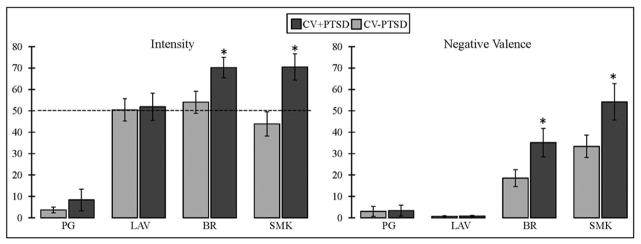Figure 1.

Figure 1 illustrates participant ratings of odor intensity and negative valence (unpleasantness) on 100mm visual analog scales. Combat veterans with PTSD (CV+PTSD) compared to combat controls (CV−PTSD) rated burning rubber (BR) and cigarette smoke (SMK), but not lavender (LAV) or the odorless control (PG), as significantly more intense and unpleasant. The dashed line represents the average odor intensity of LAV, BR, and SMK, acquired in healthy adult civilians during the formulation of odor cues. *=p<.05
